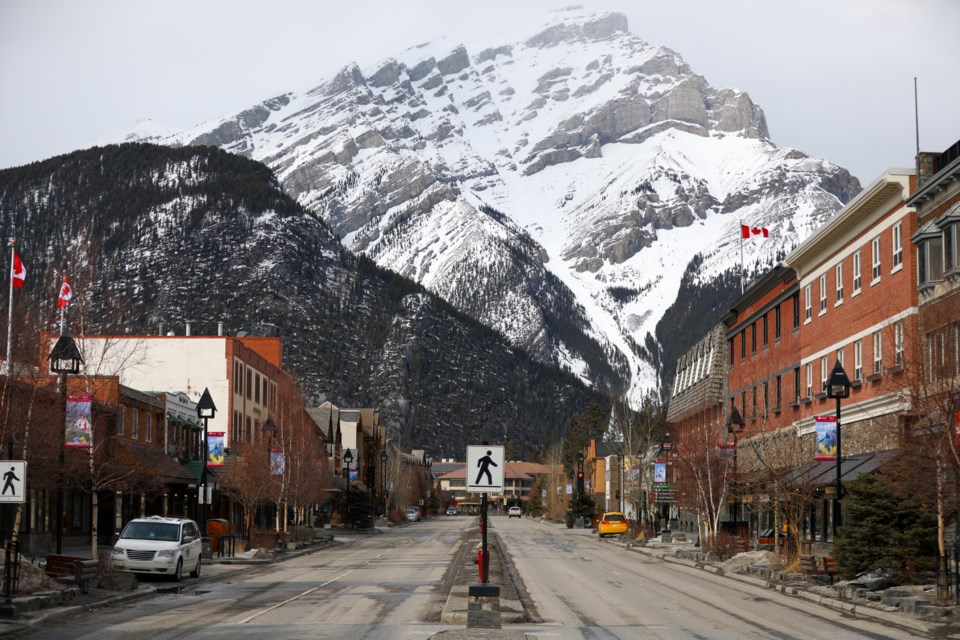BANFF – Parks Canada is calling on the Town of Banff to set a cap on the number of home-based businesses in the national park townsite to preserve residential housing and character of neighbourhoods.
As part of the draft management plan for Banff National Park released on April 14, the federal agency has directed the municipality to set clear limits on the number of home occupation businesses, including bed and breakfast homes, by 2023.
The Town of Banff is not providing an interview or commenting on the specifics of the draft 2021 management plan at this point, saying they want to do a more extensive review of the content in all sections of the document.
“It is anticipated our review will take several weeks and include comments from Municipal Planning Commission, Banff Heritage Corporation and Banff town council,” said Town Manager Kelly Gibson in an emailed statement.
There are presently no limits on the number of home-based businesses, which currently sit at about 70 licensed businesses – both type 1 and type 2 home occupations.
The number of bed and breakfast homes in the Banff townsite has been capped at 65 since 1998, while the existing larger, boutique-style B&B inns were grandfathered at that time, but no more were allowed.
But following proposed B&B Inn sales and proposed expansions, including a high-profile case before Banff’s Municipal Planning Commission, Parks Canada has further addressed B&Bs inns in the draft management plan.
In 2019, a proposal to demolish Beaver Street Cabins and increase units from six to 10 to make way for a two-storey building was turned down by MPC based on intensification of commercial development in residential neighbourhoods.
In the new draft management plan, gross floor area forming part of a separate dwelling or area for a resident staff in a B&B inn may be increased as long as it complies with all other stipulations in Town of Banff’s land use bylaw.
“However, increases in the gross floor area used in whole or in part to accommodate or serve guests is not permitted,” states the draft management plan.
“Changes in the location of a bed and breakfast inn to lots or parcels not already used for that purpose are not permitted.”
Also related to B&B inns, the draft document states that inns that have a gap of six months or more in their operations and/or their licensing will not be re-licensed.
In cases where the existing commercial development is the main use of a site in residential area – such as a B&B inn, the Silver Dragon Restaurant on Spray Avenue and Petro-Canada gas station on Squirrel Street – neither these uses nor the amount of commercial floor area shall increase.
The 2021 draft management plan also stamps out any chance of a commercial businesses setting up shop in Public Service (PS) zoned lands following a lengthy legal battle between Parks Canada and the Town of Banff over a lawyer’s office.
In 2013, the Alberta Court of Appeals backed Parks Canada’s position and quashed a development permit for a lawyer’s office on Beaver Street in the PS district.
The federal agency, believing the Town was attempting an end-run around the commercial development cap, argued PS lands are reserved for such uses as schools, churches and hospitals, for example.
- RELATED: Parks wins law office court battle
The new draft management plan spells out that land uses within the PS district are limited to non-commercial uses of an institutional, government, educational or community service nature required to meet the needs of eligible residents.
“Commercial uses may not occur in this area except as they may be ancillary (i.e. subordinate or incidental to, and in support of) to the primary or principal institutional, government, educational or community service use of the building or site,” states the plan.
“Non-conforming commercial uses in this district that existed as of June 1998 are grandfathered.”
The draft plan states that development in the townsite won’t interfere with views for pedestrians in the downtown core from Banff Avenue, Bear Street, Buffalo Street, Beaver Street, Bow Avenue and the Bow River pathway.
These include the view along Banff Avenue and Muskrat Street to Cascade Mountain, the view of Mount Rundle from Buffalo Street and Central Park; and the view of Mount Bourgeau from the Bow River pathway and the Banff Avenue Bridge.
Reinforced in the draft management plan is Parks Canada’s 1998 commitment to develop a visitor information facility by completing the assembly of lands on the east side of the 200 block of Banff Avenue.
Future redevelopment of these lands, according to the draft document, will incorporate high standards for urban design, landscape architecture, environmental sustainability, and reflect the town’s mountain esthetic and architectural guidelines.
“This also extends to the public spaces associated with the development,” states the plan.
“In the near term Parks Canada and the Town of Banff work together to foster a more dynamic and integrated open space within the downtown core.”
The draft plan is silent on the 10,000 residential population cap in previous management plans, after the courts found the wording in previous management plans was intended as an aspirational target, not a hard and fast cap.
A spokesperson for Parks Canada was not immediately available for comment on the draft management plan.


